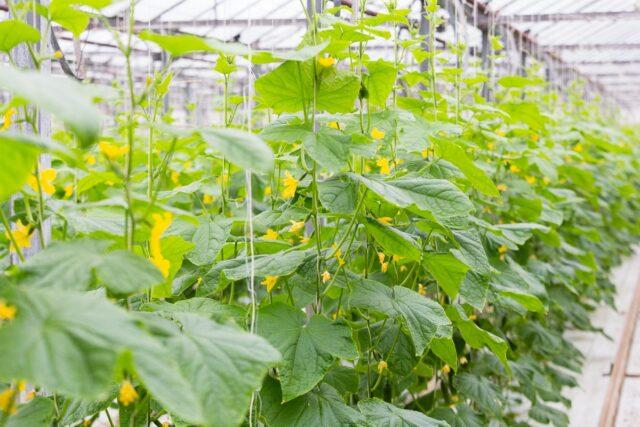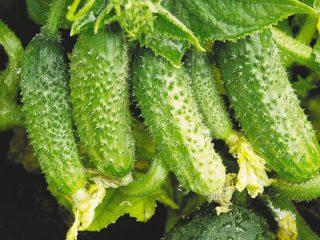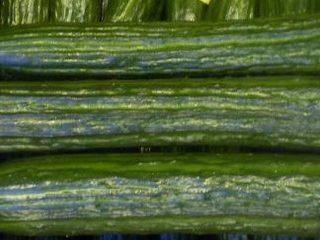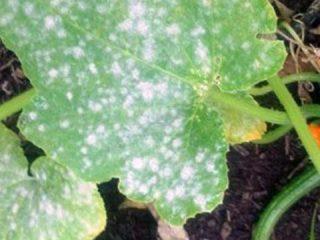Content
Cucumber Khrustik F1 is an almost universal hybrid. This applies to the methods of its cultivation, the possibilities of using the crop, and the growing region. Gardeners have been familiar with it for more than ten years and continue to cultivate it, despite new varieties and hybrids appearing on sale every year. “Consumers” also value these cucumbers for their taste.
History of appearance
Khrustik F1 is a cucumber hybrid created by one of the most famous Russian agricultural companies, Gavrish. This is the achievement of a whole team of breeders. The work was carried out on the basis and with the participation of the Moscow Research Institute for Breeding Vegetable Crops, so both organizations are the originators. An application for admission to registration on the territory of the Russian Federation was submitted in 2011. In the same year, the hybrid was included in the State Register.
Also, its prevalence is facilitated by its suitability for planting indoors and outdoors.Officially, it is considered a hybrid for unheated greenhouses, but the experience of gardeners shows that plants successfully develop and bear fruit in ordinary beds.

According to the official conclusion, the Khrustik cucumber is suitable for cultivation in any Russian region
Description of cucumbers Khrustik F1
The hybrid belongs to the category of indeterminate. It does not have a “programmed” limit for shoot growth. If they are not trimmed, the cucumber vines can stretch 3-3.5 m. The growth rate is quite high, but the stems do not branch intensively. The foliage is average, the leaves are not too large.
The flowers are predominantly “female”. Each of them is a future fruit ovary. Flowering in bunches. According to the originator, each “bundle” consists of 7-8 flowers, the State Register and the experience of gardeners indicate that most often there are 2-3.

The shoots are quite powerful, but the Khrustik cucumber bushes still need support
Khrustik F1 cucumbers are one-dimensional (weighing about 120 g and 10-12 cm long), with a regular cylindrical shape. The skin is thin but durable, almost uniform in rich green color, slightly “diluted” with lighter thin strokes and blurry spots. There are few large tubercles and white spines, the edges are light and relatively sparse.
The pulp of cucumbers is very dense, juicy, without voids, with a pronounced fresh cucumber aroma and small, almost imperceptible seeds when eaten. The sweetish taste is officially described as "excellent". The absence of bitterness is genetic.
The purpose of the fruit is universal.Khrustik cucumbers are very good fresh (both on their own and as a component for salad, okroshka) and in homemade preparations. Often, for salting and pickling, “gherkins” weighing 60-80 g and 7-8 cm long are removed.

The fruits retain their characteristic distinct crunch and texture even after salting and pickling.
Characteristics of Khrustik cucumbers
In addition to the appearance of bushes and fruits, their taste, gardeners take other indicators into account when choosing a variety. You need to determine in advance the most important criteria for yourself and be guided by them.
Productivity of Khrustik cucumbers
The originator in the description of the hybrid indicates its yield in the range of 10-11 kg/m². According to the State Register, the figures are higher – 14.4-15.3 kg/m². Cucumbers ripen en masse, in several “waves”.

Regular harvesting of Khrustik cucumbers has a positive effect on the possibility of further fruiting of plants
Ripening and flowering dates
Khrustik F1 is an early ripening hybrid of cucumbers. From the moment the seedlings emerge from the seeds until the first fruits are collected, 44-48 days pass. Sometimes gardeners indicate a longer period - 50-60 days. This variation is due to different growing methods, which differ significantly in climatic and weather conditions.
The first flowers appear on plants in the 5-7 phase of the true leaf. It takes 14-17 days for the formation of fruit ovaries and ripening of Khrustik cucumbers.
Resistance to diseases and pests
Breeders have provided Khrustik cucumbers with innate immunity against powdery mildew and cladosporiosis. The experience of gardeners shows that they are practically not susceptible to the mosaic virus and various types of rot.The most dangerous disease for a hybrid is peronosporosis (downy mildew).
Khrustik cucumbers have no protection against pests. Therefore, they are often attacked by aphids, whiteflies, and spider mites.

Downy mildew is easily identified by yellow spots on the front side of the leaf and a continuous layer of purple-gray bloom on the back
Advantages and disadvantages
The official description of the cucumber hybrid Khrustik F1 and reviews from gardeners allow us to highlight the following advantages:
- early ripeness and mass fruiting;
- ability to adapt to a wide range of climatic and weather conditions;
- suitability for cultivation in open and closed ground;
- the presence of immunity from some diseases dangerous to the culture;
- consistently high seed germination and yield;
- rapid growth of shoots;
- female type of flowering, formation of fruit ovaries without the participation of pollen from male flowers and pollinating insects;
- external presentability, one-dimensionality;
- versatility of cucumbers;
- excellent taste and complete absence of bitterness;
- good transportability and shelf life for an early variety (up to 10-12 days at room temperature, up to a month in a basement or cellar).
The disadvantages of Khrustik cucumbers are much less significant than their advantages:
- the need for regular harvesting (if this is not done, the formation of new fruit ovaries will slow down);
- demanding of lighting and moisture-loving.

In the shade, the rate of growth and development of bushes slows down, and the yield of Khrustik cucumbers decreases.
Planting cucumbers Khrustik
Gardeners practice cultivating Khrustik cucumbers in greenhouses, greenhouses, and open beds. You can immediately sow the seeds into the soil or pre-grow seedlings at home. Depending on the chosen method, the harvest time differs by 7-15 days.
Seedling method
Khrustik cucumber seedlings develop quickly, so seeds are planted for seedlings during the last week of April. Like any hybrid, they undergo pre-planting treatment, so there is no need for germination, soaking in a solution of biostimulants, dressing with fungicides or other procedures.
Growing seedlings is a doable task even for a novice gardener:
- Plant the seeds one at a time in small pots filled with well-moistened all-purpose soil for seedlings. They are buried to a maximum of 1 cm, sprinkled with soil, and sprayed with a spray bottle.
- Turn the containers into a “greenhouse” by covering them with cling film or covering them with cut-off plastic bottles.
- Place in a dark, warm place, ensuring a temperature of about 25 °C. It is necessary to constantly monitor the level of soil moisture, not allowing it to dry out completely, and promptly get rid of accumulating condensate.
- Provide the emerging seedlings with 10-12 hours of daylight. In most Russian regions there will not be enough natural light; lamps will be required for additional illumination. After emergence, reduce the temperature to 20-22 °C. Caring for seedlings consists only of timely watering.
- 8-10 days before planting, begin to harden the Khrustik cucumber seedlings, gradually increasing the time they spend in the open air from 1.5-2 to 10-12 hours.Hardening should be abandoned if the temperature outside drops below 12 °C, it is raining heavily, or a sharp cold wind is blowing.
Khrustik cucumber seedlings are planted in the garden bed 2.5-3 weeks after emergence, in the phase of 2-3 true leaves. The recommended planting pattern is 30-40 cm between bushes with row spacing 60-70 cm wide.

The depth of the hole for seedlings is approximately 10 cm; seedlings cannot be buried deeper than in the container
Sowing in open ground
Seeds are planted in the second half of May (gardeners in the Urals, Siberia, and the Far East sometimes have to wait until early June) in well-moistened soil, deepened by 2-3 cm. The planting pattern is either the same as for seedlings, or 50x50 cm. To make seedlings appear faster, it is recommended to cover the bed with Khrustik cucumbers with plastic film or black covering material on the arches.

The soil should warm up to 15-16 °C at the time of planting the seeds.
Planting Khrustik cucumbers in a greenhouse
Compared to planting in open ground, only the timing differs. Here they shift to the very beginning of May; accordingly, seeds for seedlings are planted in early April.
Khrustik cucumbers are placed at intervals of 20-30 cm. Depending on the area of the greenhouse, 2-4 rows are formed, the bushes in each of them are arranged in a checkerboard pattern.

You can plant both seeds and seedlings of Khrustik cucumbers in the greenhouse
Caring for Khrustik cucumbers
Khrustik cucumbers require the following agrotechnical measures:
- Watering.In a greenhouse and in open ground in the absence of precipitation - daily or every other day. When planting in ordinary beds, you need to take into account the frequency and abundance of precipitation.
- Garter and trimming. In open ground you will need a trellis; in a greenhouse, bushes are usually tied to a wire stretched under the roof. Experienced gardeners recommend forming Khrustik cucumbers into one stem. When the shoot reaches the desired height, it is pinched. Regularly remove the lower drying leaves.
- Fertilizer application. Khrustik cucumbers are fed three times. In the phase of 3-4 true leaves or 7-10 days after planting the seedlings, they are watered with a solution of any mineral nitrogen fertilizer. Immediately after flowering and the first mass fruiting, store-bought fertilizers are used specifically for cucumbers.
- Prevention of diseases and pest attacks. To protect the Khrustik hybrid from downy mildew, the bushes and the soil under them are sprayed with a biofungicide solution every 7-10 days. You can also use folk remedies - infusion of colloidal sulfur, kefir diluted with water or curdled milk with the addition of iodine. Pests are repelled by planting any flowers or herbs with a strong aroma next to the garden bed or in the greenhouse. If the attack cannot be avoided, treat with suitable insecticides (if spider mites appear, acaricides).

The watering rate varies from 1-1.5 to 4-6 liters as the Khrustik cucumber bushes grow
Conclusion
The Khrustik F1 cucumber is invariably popular among amateur gardeners due to its early and massive fruiting, very good yield, excellent taste, and the ability to be used both fresh and for homemade preparations. It can be cultivated in open or closed ground, planted in beds with seeds or seedlings. In any case, it does not make any special demands on agricultural technology; even novice gardeners can cope with growing Khrustik cucumbers.
Reviews from gardeners about Khrustik F1 cucumbers








